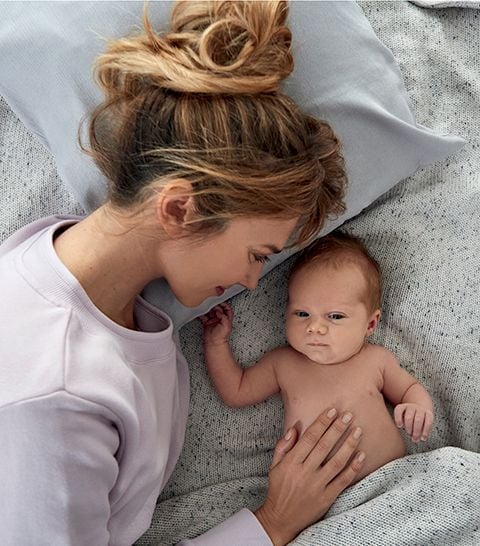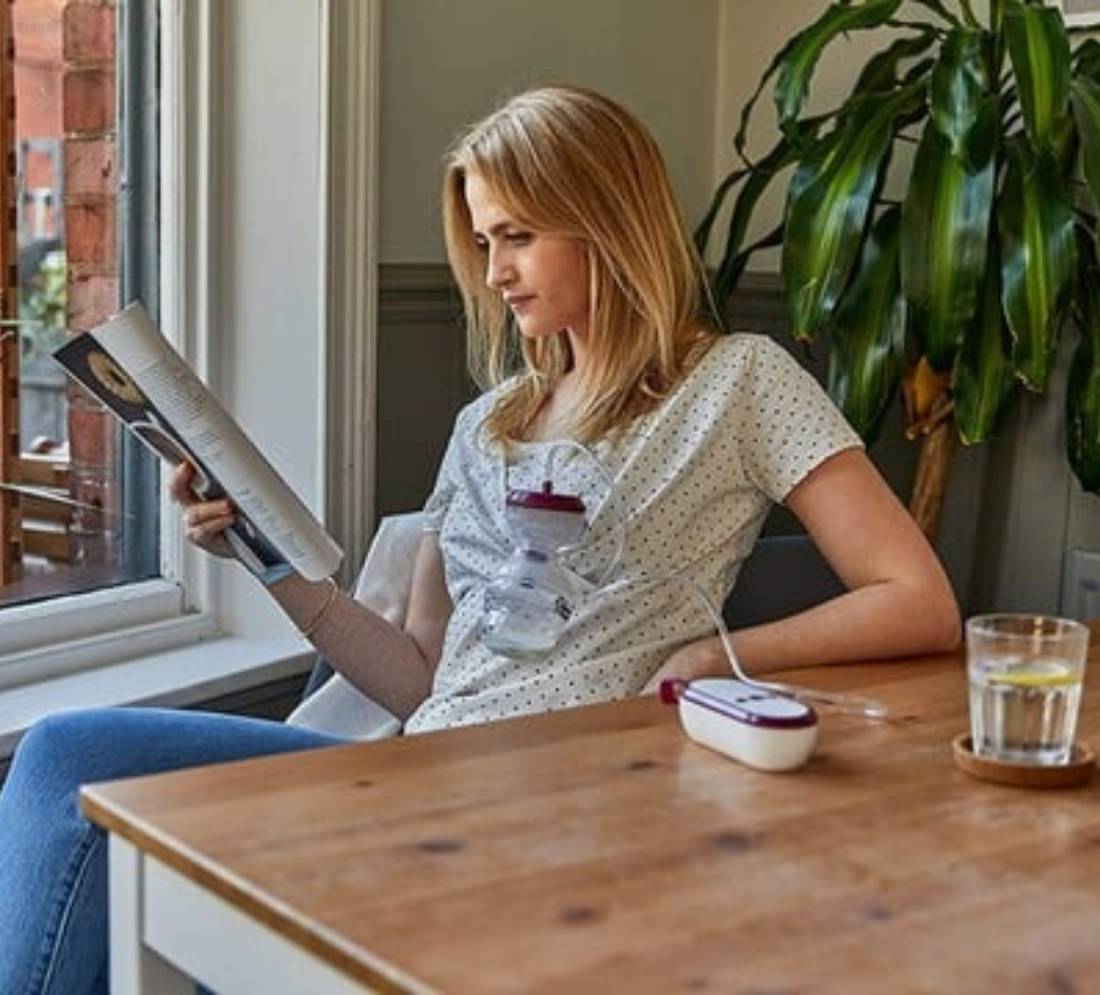
Breastfeeding: The Essentials
By its very nature breastfeeding doesn’t strictly require any equipment. However, there are certain items you might want to try to help make breastfeeding work even better for you.
Breast Pumps
There may be times when you won’t be around to breastfeed. In the early days you might want to let your partner take over some feeds, for their own bonding time or to let you catch up on some sleep. Or maybe you want to pop out to the shops solo. Looking ahead as your baby gets older you may be thinking about getting back to the workplace, so you’ll be away from your baby for longer periods. This is where a breast pump comes in handy, allowing you to prepare by expressing (another term for breast pumping) to make sure you always have milk at the ready. There are plenty of other reasons why breast pumps can be beneficial, too. They can help to relieve the pain of full, engorged breasts; they can stimulate milk production and build up your milk supply; and they can give you and your sore nipples a much-needed break.
Electric or Manual?
You can choose between a manual breast pump or an electric breast pump when expressing. A manual breast pump is powered by you, whereas an electric breast pump does the expressing for you. When choosing between a manual and electric pump, consider how often you plan to pump, as electric pumps can express milk much faster. Some mums won’t pump very often and can get by with a manual pump. However, if you plan to pump more than once a day or to express larger volumes of milk to store up for more feeds, then electric breast pumps, such as the compact and speedy Pippeta Compact LED Hands Free Breast Pump, and the quietly efficient Pippeta LED Wearable Hands Free Breast Pump will be a big time-saver.
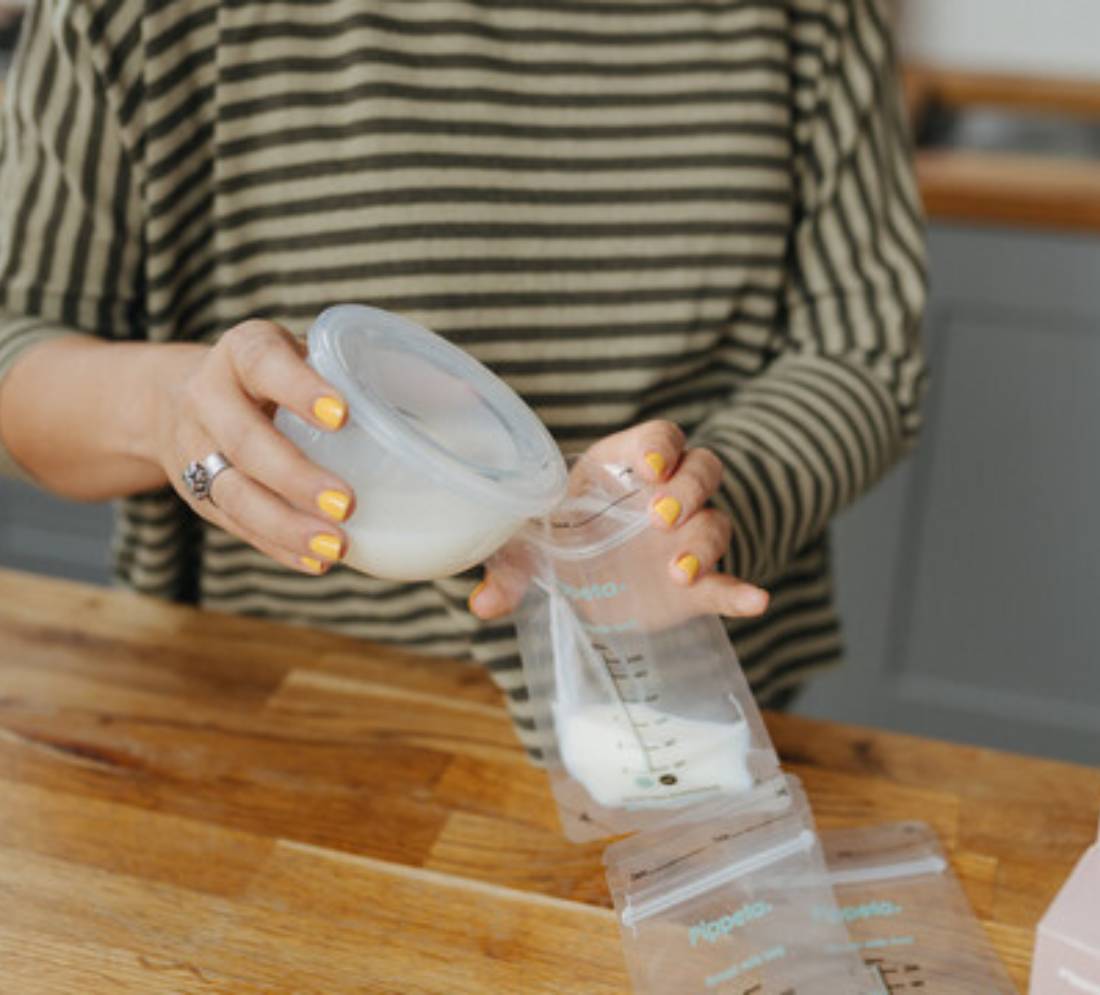
Storing your Breastmilk
You store expressed milk in a bottle or bag. Bags, such as Pippeta Breast Milk Storage Bags save space and are ideal for freezing breastmilk. Bottles are easily changed from storage-use to feeding-use simply by swapping the lid. Remember to always sterilise your baby feeding products (keep reading for our sterilising tips.) When storing breast milk, label the container with the date it was expressed and use refrigerated breast milk within 3 days of expressing (or 5 days if your fridge is set at less than 4ºC). If stored in a freezer below 18ºC, it can be safe for up to 6 months. Babies tend to prefer to receive their milk at room temperature, which is around 20ºC, so use bottle warmers to safely prepare a bottle for your little one.
Feeding Pillow
These are a great way to keep you and baby comfy while you feed: Feeding can sometimes take time, so you’ll want to make sure you're both calm and relaxed. A pillow like DockATot Nursing Pillow offers comfort and support for the two of you.
Breast Pads
Leaks are inevitable. Trust us, Tommee Tippee Made for Me Disposable Breast Pads will always come in handy.
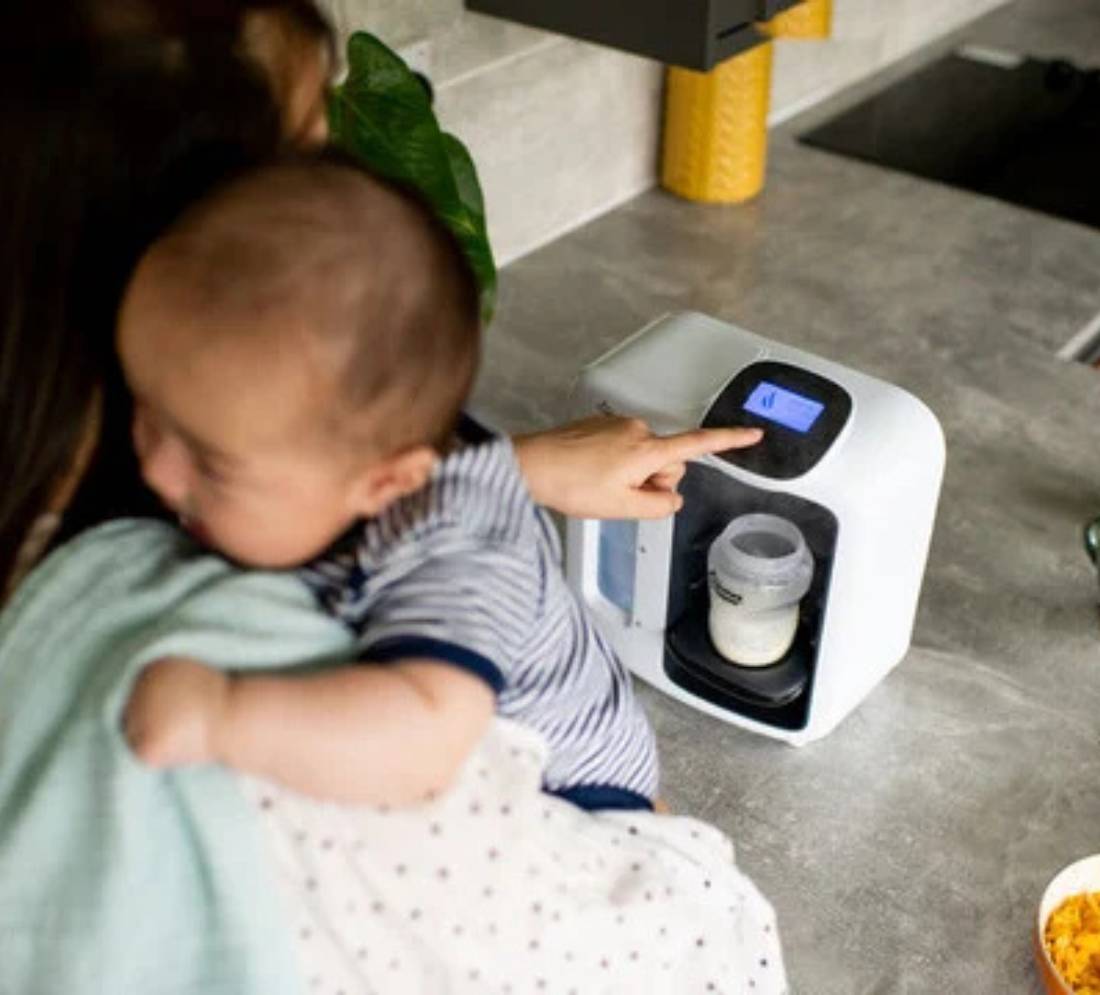
Bottle Feeding: The Essentials
If you’re bottle feeding your baby, here are the essentials, plus some useful tips.
When you’re bottle feeding – whether that’s formula or breast milk – choosing which bottles to use can sometimes be confusing. There are different sizes and shapes of bottle, different teat types and shapes, different flow rates and sometimes added features such as anti-colic technology. Smaller bottles are generally more suited to newborns who will feed little and often, while larger bottles hold more milk and are designed for older babies as they feed larger amounts of milk. When it comes to the teat, they vary in shape, with some designed to replicate the shape of a breast/ nipple. Teat flow varies from slow flow - generally preferable for a newborn - to a slightly faster flow which is more suitable as your baby gets older and more familiar with bottle feeding.
You can also buy variflow teats where the flow rate can be varied. When it comes to bottles you can also look for added features such as anti-colic technology. Tommee Tippee baby bottles are much loved by parents for their easy-use, easy-to-clean bottles that often have added features, as well as a breast-like teat that feels closer to skin for a comfortable feed – a great choice for parents wanting to switch between bottle and breast. Try this handy pack of six to get you started: Tommee Tippee Closer to Nature Baby Bottles. Bibs baby bottles are also really popular with new parents, loved notably for their durable, temperature and thermal-shock resistance made of borosilicate glass that does not emit microplastics into the milk. Bibs Baby Glass Bottles also has an anti-colic system that helps avoid post-feeding gas and tummy discomfort.
Bottle Preparation Machine
Making up bottle feeds can sometimes feel like a hassle– especially in the middle of the night! An electric bottle preparation machine such as Perfect Prep Day And Night Machine is so quick and easy to use, safely preparing your bottle feed in seconds. A genius piece of equipment you’ll quickly learn to love — especially at 3am!
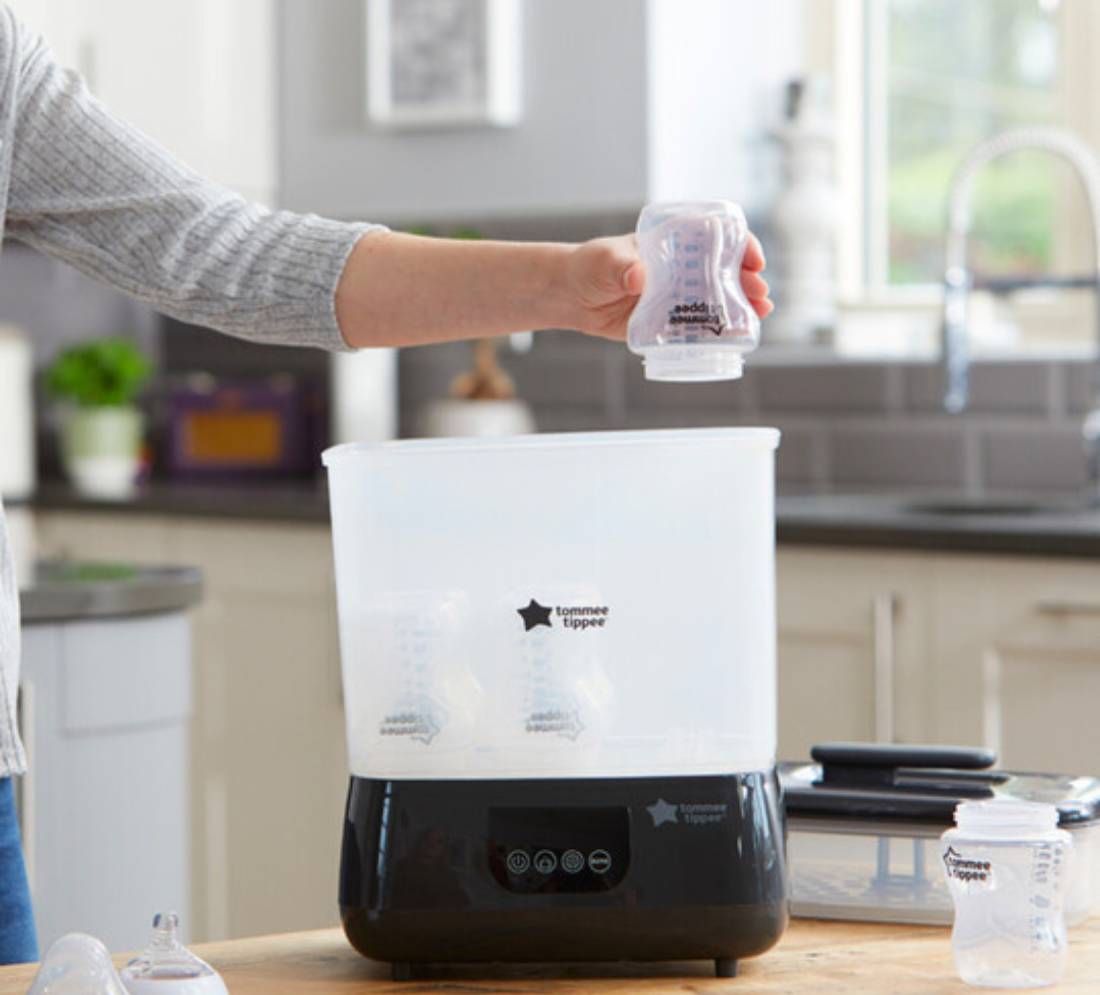
Bottle Sterilisation
Sterilising all your baby’s feeding equipment helps to protect them from illnesses. A baby’s immune system is not as well developed as an adult’s and they could become very ill if they drink milk that was contaminated with bacteria. Which is why it is recommended that all equipment used for collecting, storing or feeding expressed breastmilk or formula milk for babies under 12 months is sterilised before use. There are a variety of ways to sterilise your child's bottles, plus a range of sterilising essentials you can buy to help.
Boiling the Bottles
The majority of bacteria are killed at a temperature of 100°C (the boiling point of water) for 10 minutes. This method doesn’t require any specialised equipment, so is particularly useful if you're only sterilising occasionally (for example if you only bottle feed for the occasional feed). If you do use this method on a regular basis, just be aware that some items may become damaged by the heat so might need replacing more regularly.
Steam Sterilising
This works on the same principle as boiling: water is added to a sterilising unit and when the water boils it creates steam that kills the bacteria. Several different types of steam sterilisers are available. Some steam sterilisers are used in a microwave while others are stand-alone units that plug into the mains, such as Tommee Tippee Advanced Electric Steam Steriliser Dryer and Babybrezza Super-Fast Steriliser Dryer.
Cold Water Sterilising Solution
Cold water sterilisers use chemicals, which are mixed with cold water, to sterilise feeding equipment. They can be bought in tablet or concentrated liquid form, which you add to cold water. A handy fall-back option for when you’re travelling, if you usually use a sterilising unit at home.
UV Light Steriliser
Ultraviolet is a form of invisible light that kills 99.9% of microorganisms. It's an effective way to disinfect against harmful bacteria, mould, viruses and other germs without the use of chemicals and is often used to sterilise equipment used in hospitals, dentists and doctor's surgeries. With the Ultra UV Steriliser, you get clean, sterilised baby bottles when you need them. No water, no hot steam, no wet bottles, just clean, dry and sterile feeding accessories that are safe to feed your little one.
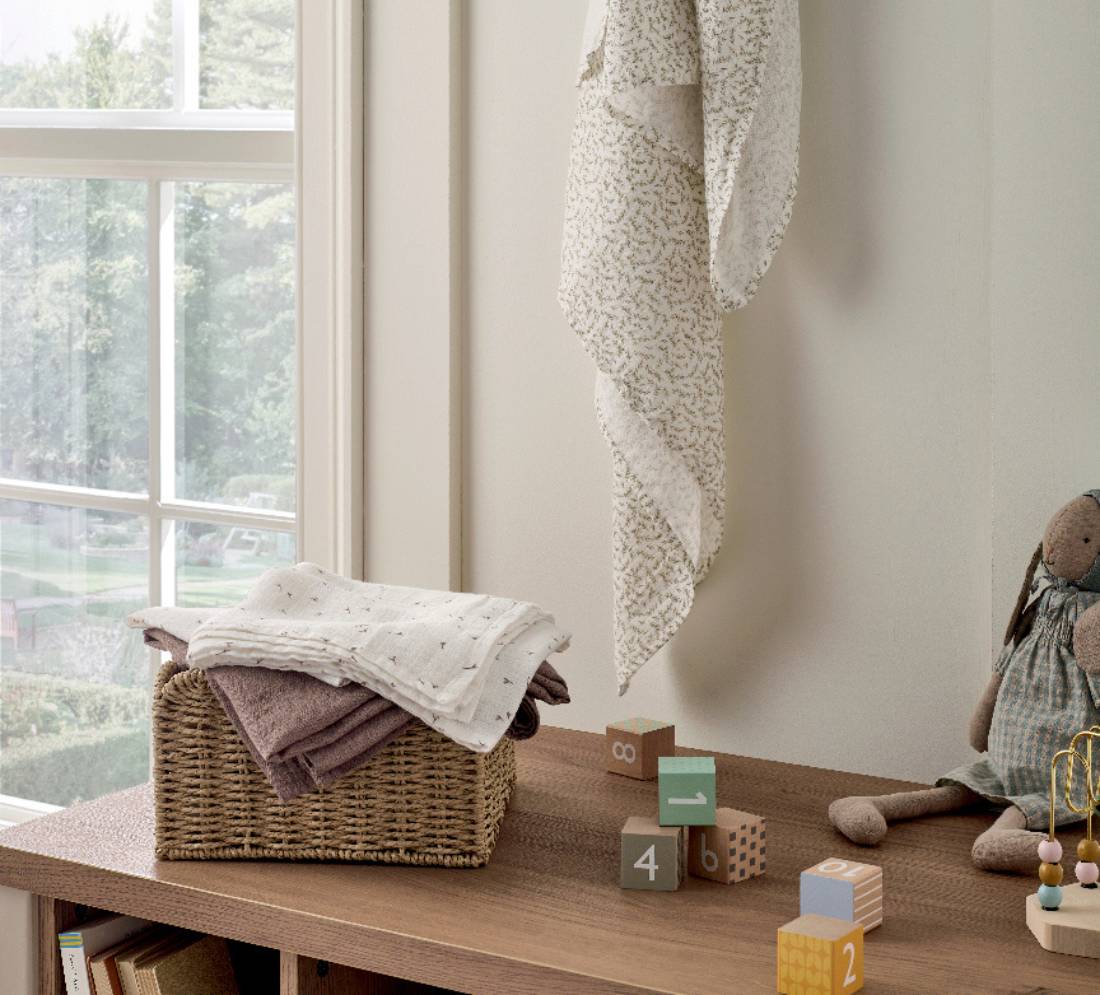
Muslin Squares
Muslin clothes are handy for mopping up spit-up and milk spillages (these will happen more often than you expect!) and as they get older for clearing up their spills, grubby mouths and fingers. Plus, they double up as comforters and swaddle wraps. So, trust us when we say you will want to stock up on these so you can keep them handy at all times (keep a handful in your baby bag, one in each room of the home, one in the car, one in their buggy and so on)














